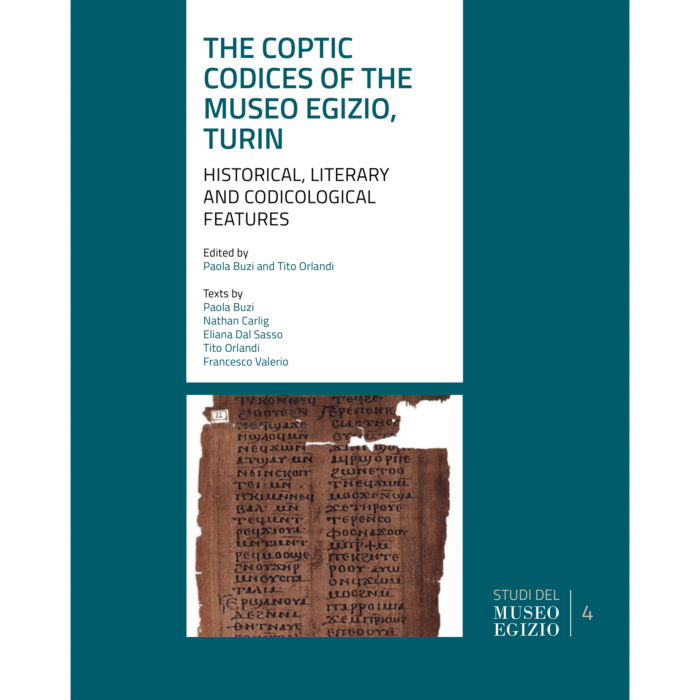The Coptic codices of the Museo Egizio provide an exceptional occasion for reconstructing the consistency of an ancient monastic library, as well as for documenting Late Antique Egypt’s narrative preferences, literary interests, and theological orientations. At the same time, they are a valuable witness to the history of the ancient book in its evolving intellectual, material, and technological aspects.
This volume, edited by Paola Buzi and Tito Orlandi, aims to guide readers – both specialists in this field and those who are simply interested in the cultural phenomena of Christian Egypt – through the Museo Egizio’s collection of Coptic literary manuscripts, particularly the papyrus codices from This (the well-known “capital” of the Protodynastic Period, located not far from Abydos), which the museum acquired in the 1820s from Bernardino Drovetti.
The volume is divided into two sections. The first section outlines the history of studies of these Coptic manuscripts since they reached Turin, their literary content, and their place in the broader context of Coptic literary production (Paola Buzi and Tito Orlandi). While the papyrus codices from This (Nathan Carlig) are the focus of this volume, there is also a chapter dedicated to a parchment codex of unknown provenance and biblical content, which Drovetti also purchased in Egypt (Francesco Valerio). Lastly, the bookbindings housed in the papyrus storeroom which are very likely detached from the papyrus codices, are analysed for the first time herein (Eliana Dal Sasso).
The second section is of a more technical nature and contains a detailed codicological description of the bookbindings (Eliana Dal Sasso) and papyrus codices, which led to the reconsideration of the codicological units’ composition in some cases (Nathan Carlig).
The content of both sections of the volume is based on accurate autoptical analysis and, in some cases, archaeometric measurements of the inks, in addition to the necessary literary and historical reflection.This volume is one of the scientific outcomes of the ERC Advanced Grant PAThs–“Tracking Papyrus and Parchment Paths: An Archaeological Atlas of Coptic Literature. Literary Texts in their Geographical Context: Production, Copying, Usage, Dissemination, and Storage”, 3 funded by the European Research Council, Horizon 2020 programme, project no. 687567, hosted by Sapienza Università di Roma and directed by Paola Buzi (paths.uniroma1.it), and of the CMCL enterprise – “Corpus dei Manoscritti Copti Letterari” – founded and directed by Tito Orlandi (cmcl.it).
Collana Studi del Museo Egizio Isbn 9788857020075 Pagine 276 Tipologia

No comments:
Post a Comment